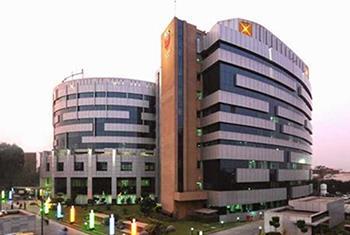During the Procedure
TAVR can be done in a variety of ways, depending on your health and the condition of the blood vessels.
- The most typical TAVR procedure uses the femoral artery, a blood vessel in your groin or thigh.
- If the femoral artery is too small or damaged, the doctor may use blood vessels in the chest to direct the tube to the heart. The term “transapical access” refers to this method.
- If a patient’s leg arteries are too narrow or damaged for a more common procedure called transcaval access, stomach area blood vessels may be used instead. This will allow high-risk patients to receive TAVR.
- In case of a heart surgery already performed before or in case of another condition that makes it difficult to access other parts of the chest, accessing the heart through the vessel under the clavicle, or collar bone, may be an option.
- Transaortic access refers to the practice of using the carotid artery in the neck to feed the feeding tube into the heart. Even though this procedure is uncommon, it might be used when all other options have failed.
- Through the septum, the tissue wall separating the right and left atria of the heart, is another uncommon entry point. By directing the tube through a blood vessel from the thigh to the heart, the doctor is able to reach the damaged valve.
TAVI/TAVR is performed while the patient is under general anesthesia. The doctor will make a small incision, either in the upper chest, in the leg, or in the chest between the ribs, depending on the method of treatment.
At the site of the incision, the medical staff will apply a small, hollow tube known as a sheath. The damaged valve is then opened in order to make room for the replacement.
Through this sheath, a catheter is inserted in order to reach the aortic valve. A balloon is inflated at the termination point once it reaches the valve. The thickened tissue is pressed by the balloon, deflated, and then properly removed.
The new artificial valve is inserted through the sheath and then directed to the heart valve after the diseased valve leaflets have been opened.
When the catheter’s balloon is inflated, the new artificial valve expands inside the unhealthy valve. The balloon is deflated and subsequently removed after this new valve has been successfully positioned.
Several medications may be prescribed after TAVR, including:
- Blood thinners (anticoagulants).
- Antibiotics.
In case any new or deteriorating signs or symptoms is experienced, such as:
- A feeling of faintness or dizziness
- The ankles are swollen.
- Unexpected weight gain
- Extreme fatigue after activity
- Infection symptoms or signs
Obtain immediate medical assistance if there is:
- Chest pressure, tightness, or discomfort
- Severe, unexpected breathlessness fainting







